Disclaimer: Moving Health Care Upstream is a collaborative effort originally co-led by Nemours Children’s Health System (Nemours) and the Center for Healthier Children, Families & Communities at the University of California- Los Angeles (UCLA). The views and opinions expressed in this article are those of the author(s) and do not necessarily reflect the official policy or position of Nemours, UCLA or the Moving Health Care Upstream initiative.
Between January and September of 2020, nine population networks from across the country participated in Nemours’ Integrator Learning Lab; a learning-and-action collaborative in which multi-sector teams (including health care organizations) working on shared population health goals have an opportunity to receive self-directed resources, coaching, and technical assistance on issues presenting challenges to their network. The 2020 Integrator Learning Lab focused on strengthening use of integrative roles and functions within cross-sector networks. Since “Continuous Use of a Health Equity Lens” is a category within Nemours framework of essential integrative activities, it was a focal area for coaching and technical assistance in the Learning Lab.
How Did Networks Operationalize “Big Ideas” of Health and Racial Equity and Put Them into Practice?
Participants in the Integrator Learning Lab were asked to reflect on how they used technical assistance to: 1) Increase understanding of health and racial equity among members of their networks; and 2) Increase the ability of the network to operationalize health and racial equity through concrete tools, processes, and protocols. Summary responses are provided below. For more insights on putting health and racial equity into practice, view our video series featuring members of Nemours’ 2020 Integrator Learning Lab.
Understanding– Increasing understanding of health and racial equity among network partners was facilitated via 1) trainings that focused on level-setting and establishing shared understanding of concepts and how those concepts play out in real-time via policies being used and/or considered by networks, and 2) the insights of network partners knowing when to step back and amplify the voices of others rather than attempt to lead.
Ability to Operationalize– Networks operationalized the concepts of health and racial equity and put them into practice in three key ways:
1. Wide utilization of the suite of equity tools and trainings provided in the Learning Lab. Approximately half of the Learning Lab teams reported using the Institute for Public Health Innovation’s Equity Impact Review Tool with their networks. Several went deeper on the direct technical assistance and/or modified the tool and used it with residents and community based organizations to identify which populations may experience significant unintended equity and health impacts (positive or negative) as a result of proposed policies, program, processes, plans, or systems. Some sites also committed to a deeper analysis of power and the need to be bolder in working to address disparities in health.
2. Integrators opened space for greater community voice in their networks over the course of their engagement with the Learning Lab. Networks participating in the Learning Lab found a myriad of ways to amplify community voice and leadership in their networks. This includes creating space within the existing leadership/governance table and deepening the roles that community residents play in the day-to-day management/implementation of the work.
3. Community-based organizations gained resources and language to help their health care partners move closer to a vision of health focused on well-being for all residents of the community (i.e. not limited to individuals and families served by the hospital). Over the course of the Learning Lab, networks enhanced their ability to find common ground with their network partners on the need for centering their work in health equity. In particular, health care partners changed the way they collect and analyze (largely community health needs assessment) data. New approaches to collecting and analyzing data included weaving in new data sources, disaggregating data to spotlight needs among population sub-groups, and engaging community residents in making meaning from the data.
How Can Other Networks Replicate This Success?
Tools used by participants in the Integrator Learning Lab to increase understanding put equity-advancing practices into place are included within in the “Collection of Tools & Resources: 2020 Integrator Learning Lab”- part of the just-published collection of resources associated with the Integrator Learning Lab. By providing copies of tools and resources, Nemours goal is to spread the benefit of the Learning Lab to the field at-large.
“There are some palpable changes within the language that we use in our organization. So we’re now intentional about saying that we’re going to invest in Black and Brown communities and low income communities and Indigenous communities. Why is that important? Because unless you name it, you cannot measure it, you Don’t know the impact… We’re grateful for [the equity impact review] tool, and we use that tool across our partnerships nationally and within New Jersey.”
– Integrator Learning Lab member; Partners for a Healthier Paterson
(Paterson, New Jersey)
